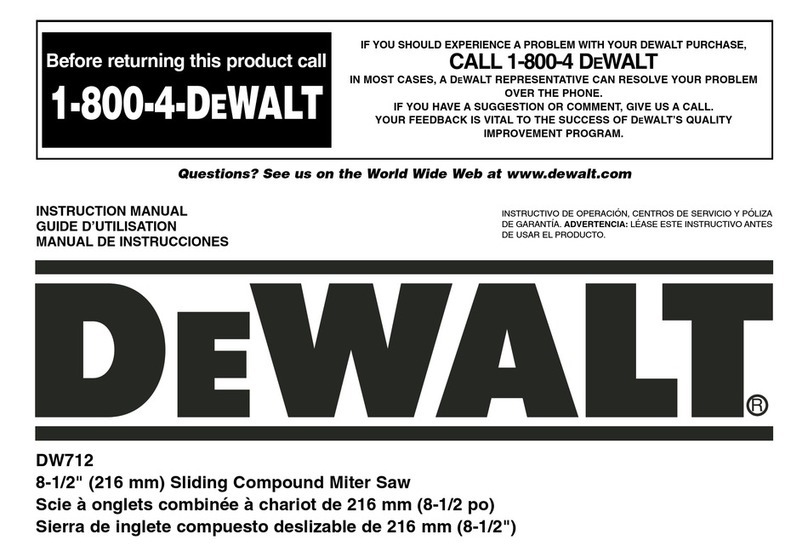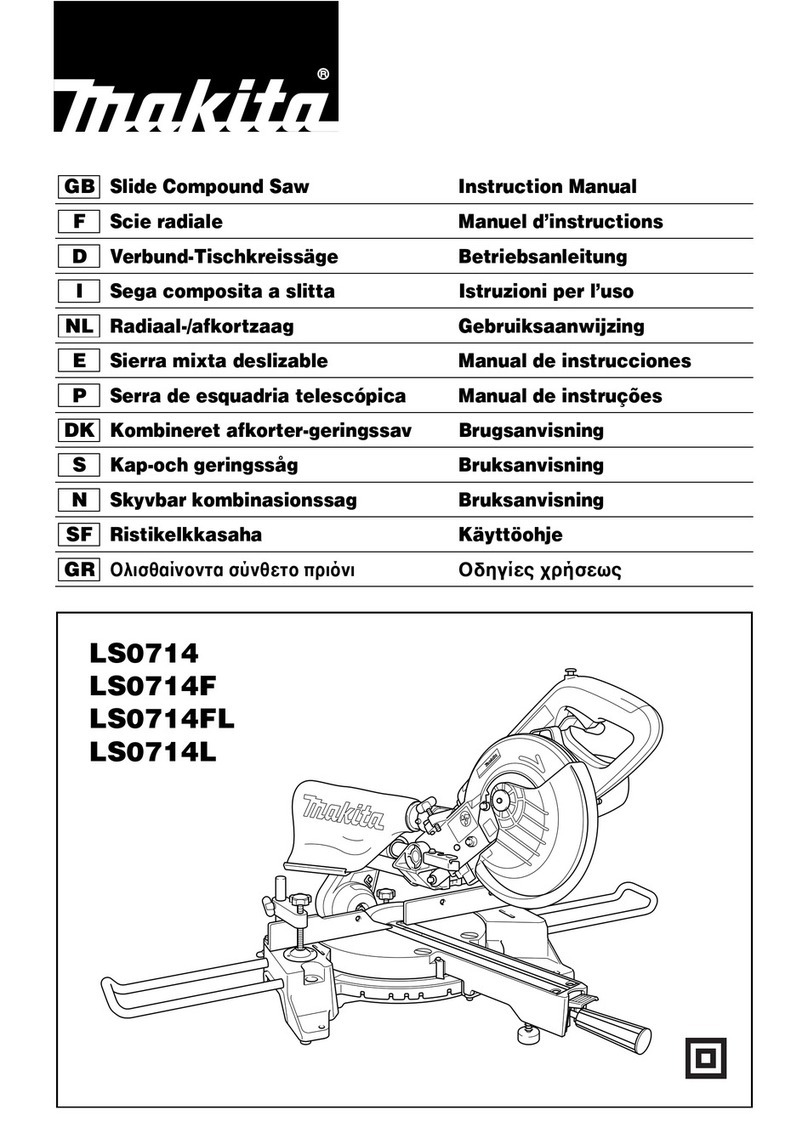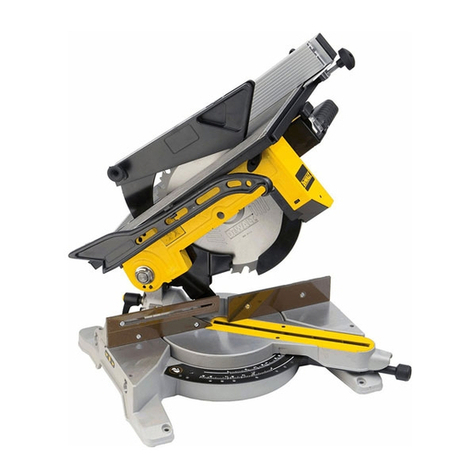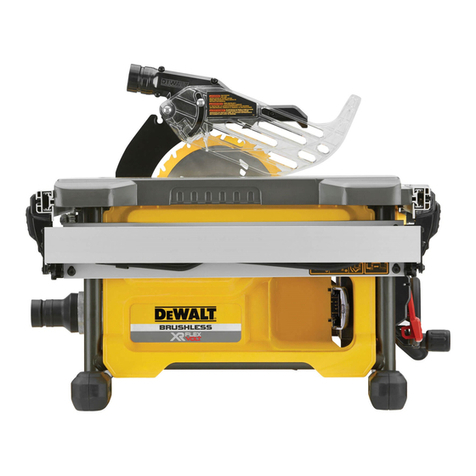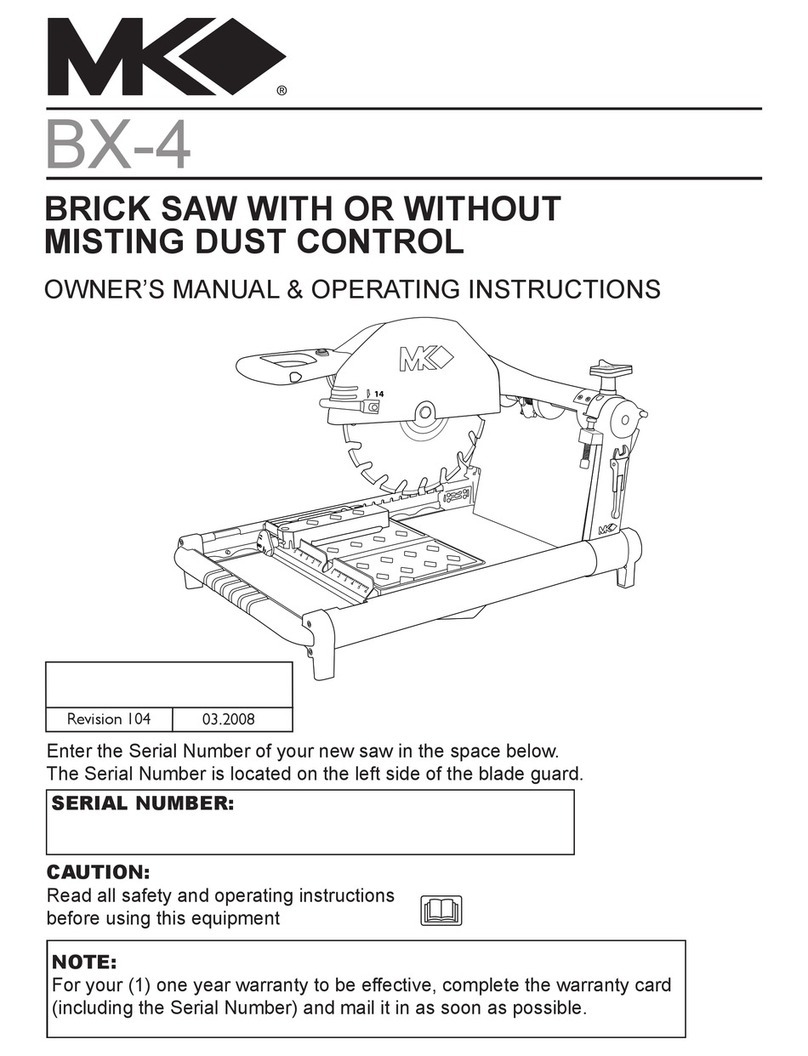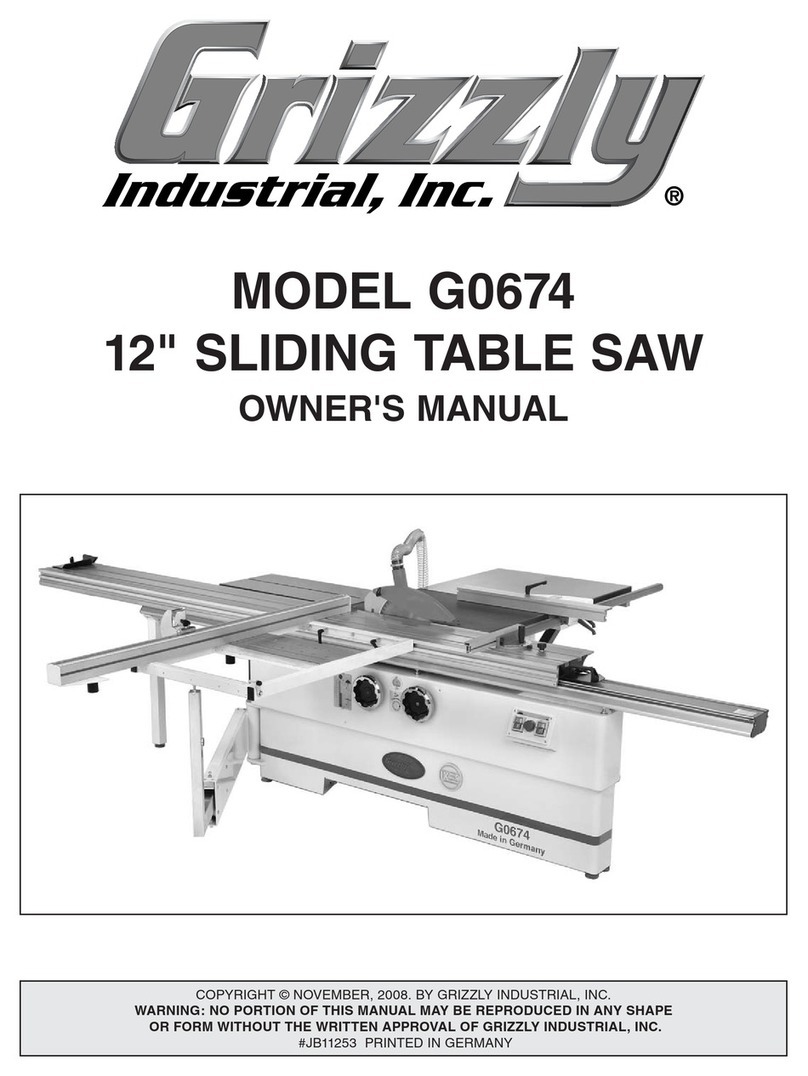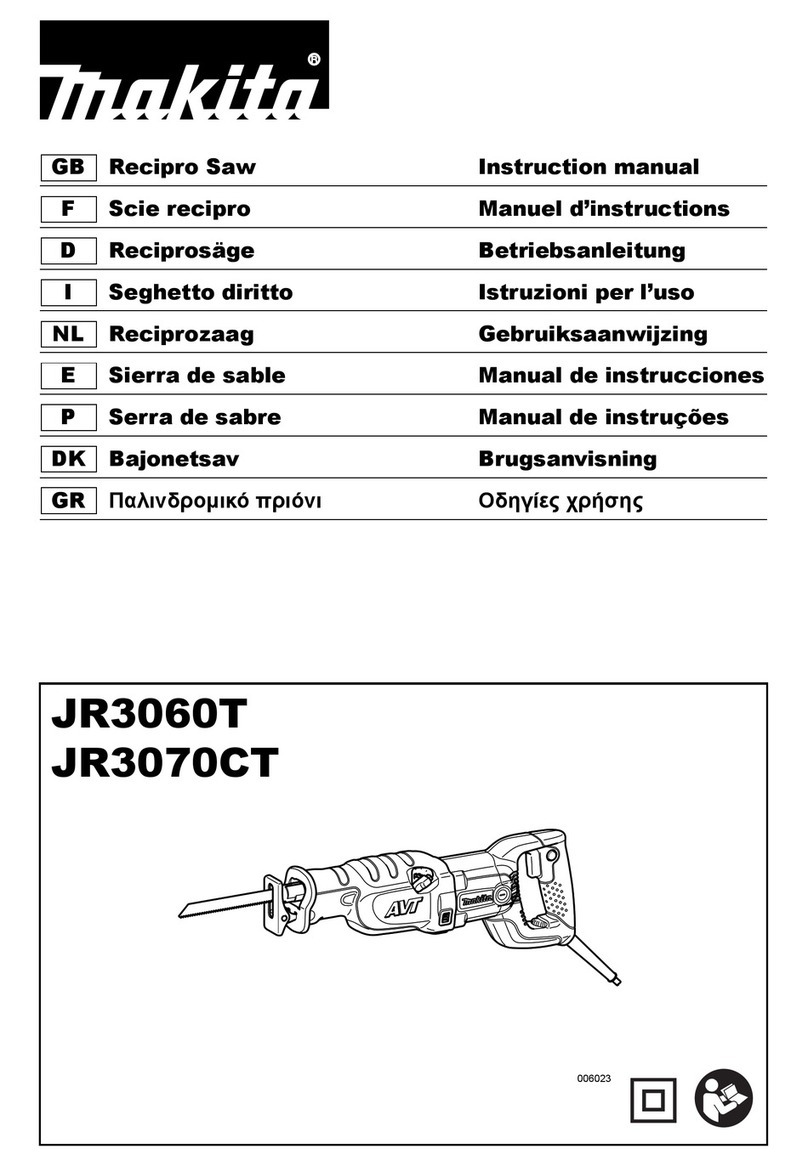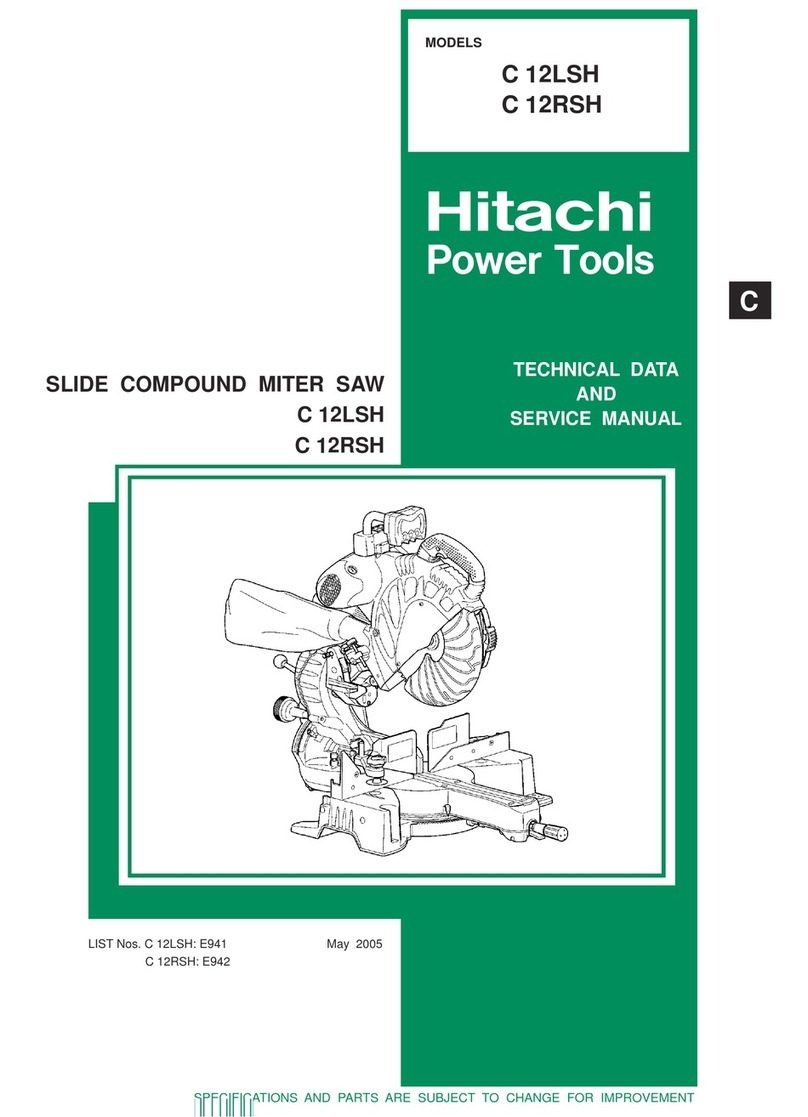Oscimed PSV User manual

Page 1/5
Version : V1.0
Instructions for maintenance for cast cutter saw
OSCIMED PSV
Remark: see also the spare parts list.
1 Be sure to observe scrupulously the safety instructions
- Always take the plug off before doing whichever intervention on the device, or when
the device remains unattended or within reach of children or persons who are not
responsible for their actions.
- The maintenance and repairs must be provided by specialized persons; the possibly
damaged parts will be replaced by original spare parts.
- Every modification of the device in comparison with its original version is strictly
forbidden.
- Check that the socket in compliance with the plug of the device.
- Check that the indicated voltage on the motor block is in compliance with the used
power source.
- Never let the device running unattended.
- Do not pull neither lift the device when using the electric cable.
2Technical description
2.1 The electrical power supply
Supplied from a socket by a cable which passes through a transformer reducing voltage
to 24 VDC, it is optimal for the security. The device complied with the latest version of
medical standards EN 60601.
2.2 The electro-mechanical drive
The oscillating movement of the blade is made by a DC motor and a mechanical device,
which is made from high quality materials, with low wear and without maintenance. The
motor and the high lifespan sensor switch are driven by a microprocessor card.
The electromechanical device is mount trough anti-noise rubbers on the body of the
cutter to avoid vibrations in the hand and noise. The switch, situated closed to the user’s
hand, is a contactless long life time sensor.
2.3 The cutting blades
The blades have a synthetic coupling center. A special lock nut makes it easy to install or
change the blade without any tool.

Page 2/5
Version : V1.0
2.4 Technical data
Main voltage
85-264 VAC
Electricity network frequency
50-60 Hz
Power
200 VA
Cycle of use
45 minutes on / 15 minutes off.
Length of the saw
255 mm
Diameter
50 mm
Weight
890 gr
Speed of the motor / frequency
14’500 rpm
Oscillating angle of blade
6.2°
Stroke at the end of the blade diameter 65mm
3.50 mm
Length of power supply cable
1.10 m
Length of 24 VDC cable
3.00 m
Noise level
63 dBA
European directive 2007/47/CE
EN 60601 classe 1
Protection
IP 20
Storage, carriage and use condition.
Temperature: 0 - 35° C
Humidity: 0 - 90%
Pressure : 900 - 1080 hpa
3 Maintenance schedule
Disconnect the power supply before any maintenance or cleaning operation.
Maintenance
Frequency
General cleaning and disinfection
6 months
Main device check
6 months
Blade check
continuously

Page 3/5
Version : V1.0
4Current maintenance operations
4.1 General Cleaning and disinfection
Wipe clean with a damp rag. Do neither immerse the saw in water nor every other liquid,
nor clean it with a shower.
For disinfection, we recommend the following wipes: WIP’ ANIOS PREMIUM from the
company ANIOS or the spray SURFA_SAFE.
4.2 Main device check
-Check both electric cables in particular that the cables is damaged and no copper is
visible.
- Check that the oscillating shaft and the switch are not blocked in their movements by an
accumulation of sawing wastes, plaster dusts.
-Check visually the appliance and the main power supply box to detect damages like
cracks, or missing screw.
-Check that the blade lock nut maintain well the blade onto the shaft without any gap.
The blade lock nut must not turn too easily, if necessary change it.
-Check that the vacuum nozzle is clean in order to offer a good visibility.
4.2 Saw blade check
User has to use the device with good blades to insure safety and easy use. The teeth of
the blade must be sharp enough. If necessary change the blade and make sure of using
the right type of blade for the right cast material.
For synthetic casts, use blades with a BLUE center.
For normal plaster of Paris, use blades with a WHITE center.
4.3 Vacuum nozzle change
Then remove the vacuum nozzle to reach the blade, by pushing the supple parts on
both sides in order to release the nozzle and slide it up.

Page 4/5
Version : V1.0
Set the nozzle back by inserting it in the guide and push down to the bottom till the
automatic lock.
4.4 Saw blade change
First disconnect the power supply.
Remove the vacuum nozzle to reach the
blade.
Turn the blue blade lock nut (1) a quarter-
turn and pull it out. To remove the blade,
incline it a little and pull out.
Set the new blade (2) on notched spindle,
return the lock nut and turn back a quarter-
turn on its internal locking notch (1).
5 Main troubleshooting
See drawing at the last page and the spare parts list.
In case of breakdown, apply this first check:
Press the start button.
Case 1: the motor doesn’t turn.
Check the voltage at the output of the power supply (2). It must be 24 VDC. If not, please
change it.
If the power supply is ok, please check the voltage at the input of the electronic card (8).
If not please change the cable (4).
If the voltage is 24 VDC, then change the motor (6) and / or the electronic card (8) and
/or the switch (5)
Case 2: the motor turn, but the saw doesn’t vibrate properly
Open the main housing (5) by removing the 3 fixation screws.
Open the front cover (10) by removing the 4 screws and check that the lever (13) is well
fixed to the oscillating shaft and that rod (13) seems to be ok.
If above parts are ok, then check that the eccentric shaft (7) turn when the motor turn.
Important: After this mechanical check, please change preventively the 3 seals (16).

Page 5/5
Version : V1.0
Manufacturer’s address: OSCIMED SA - Allée du Quartz 3 - CH-2300 La Chaux-de-Fonds
Table of contents




